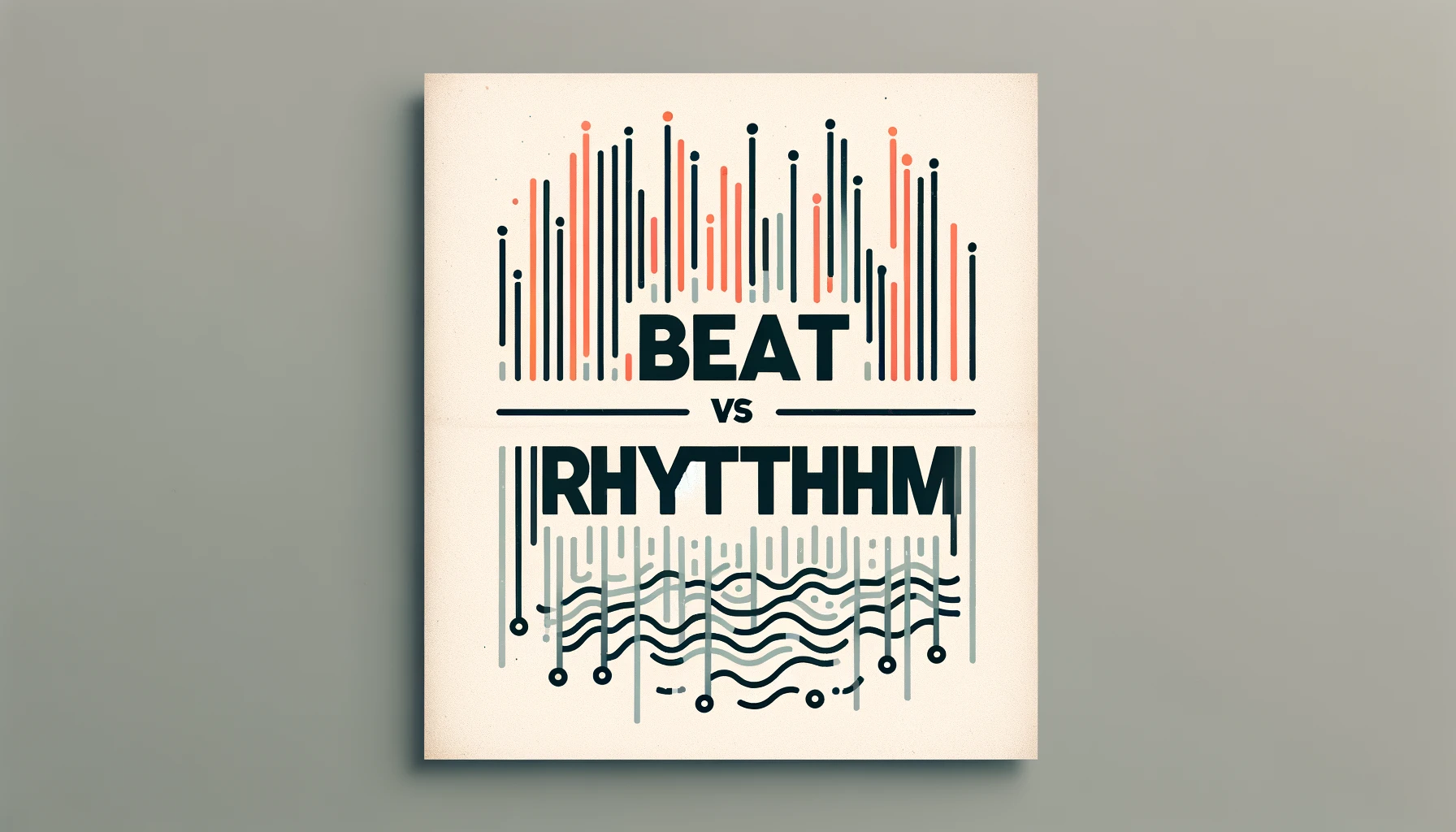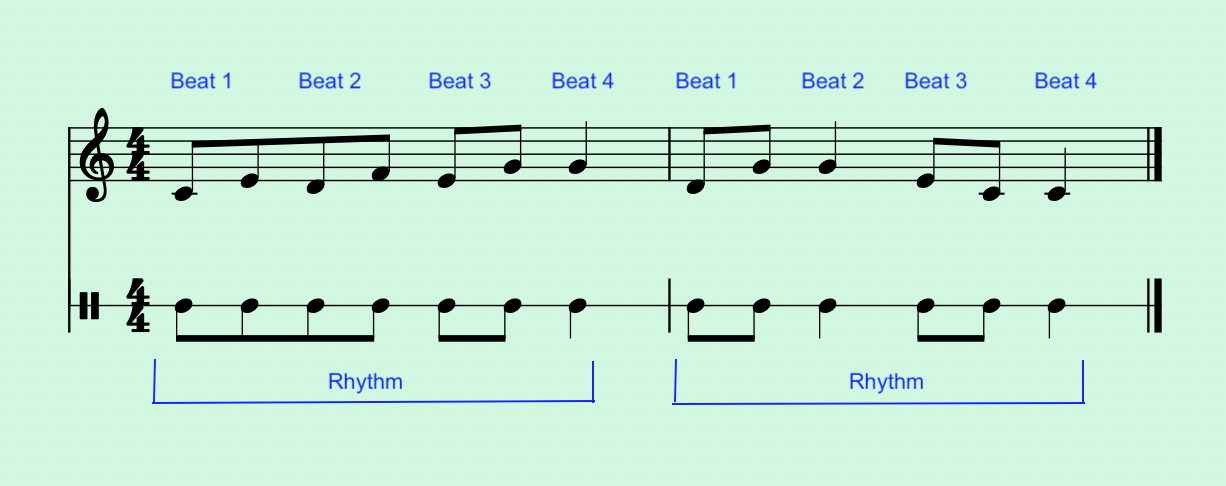
Beat vs Rhythm
Music Theory Lesson: Beat vs Rhythm
Objective: To distinguish between the concepts of beat and rhythm in music, understanding their roles and how they interact to create the structure and flow of music.
Introduction
Understanding the Terms: 
- Beat: The steady pulse that underlies most pieces of music.
- Rhythm: The pattern of sounds and silences, which occur over the beat.
The Beat
- Definition:
- The beat is the basic unit of time in music, a regular pulse that divides the passing of time into equal segments.
- The Metronome:
- Beats can be represented by the clicks of a metronome, providing a steady tempo.
- Stability and Tempo:
- The beat is the constant, unchanging tempo of the music. It provides the foundational timing element around which rhythm is structured.
The Rhythm
- Definition:
- Rhythm is the arrangement of notes and rests (silences) in time. It is how music moves through time.
- Variability and Pattern:
- Rhythm is variable and can change throughout a piece. It includes patterns of long and short sounds that add variety and emotion to music.
- Interaction with Beat:
- Rhythms are often syncopated or dotted, meaning they can align with, against, or independent of the steady beat.
Understanding the Difference
- Beat as the Backbone:
- Think of the beat as the backbone or the ‘clock ticking’ of the music, whereas rhythm is what happens over this steady beat.
- Rhythm as the Expression:
- Rhythm is the expressive element of music, giving it texture, pace, and mood.
Exercises
- Clapping the Beat:
- Listen to a piece of music and clap along to the steady beat.
- Rhythm Reproduction:
- Try to replicate the rhythms you hear in a piece of music, focusing on the patterns of sound and silence.
- Creating Rhythms:
- Practice creating your own rhythms over a given beat using a metronome or drum machine.
Conclusion
Understanding the distinction between beat and rhythm is fundamental to grasping the structure of music. The beat provides the steady tempo, while rhythm offers the variation and expressiveness that defines the character of the music.
This lesson outlines the key differences between beat and rhythm in music, highlighting their roles and how they combine to create the dynamism and emotion in musical compositions. The included exercises are designed to help reinforce the understanding and practical application of these concepts.